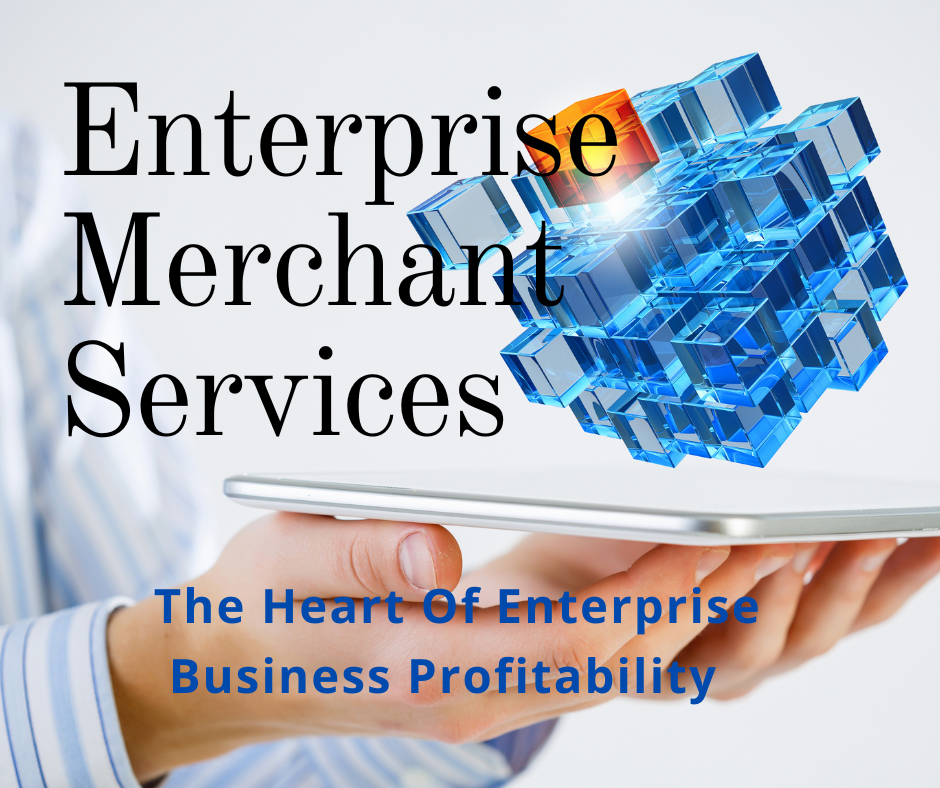%20(2).jpg?width=526&name=85646717_s%20(1)%20(2).jpg) If there’s one word that's just as much of a buzz-word in 2020 as the “new normal”, its “omni-commerce”. Retail was already adapting to a more multi-channel presence with the growth of mobile shopping and social media apps. But the unique circumstances of this year kicked everything into high gear.
If there’s one word that's just as much of a buzz-word in 2020 as the “new normal”, its “omni-commerce”. Retail was already adapting to a more multi-channel presence with the growth of mobile shopping and social media apps. But the unique circumstances of this year kicked everything into high gear.
Maybe you're a business owner who’s been operating your business for 40 years. Or maybe you just finally opened your dream business in the recent years. Either way, how familiar are you with the concept of Omni-commerce channels in the retail marketplace? And are you utilizing any of the concepts in your business effectively? (AND, what does it have to do with your retail merchant account anyway?)
Omni Channel vs Omni Commerce.
We are integrating technology more and more into our daily lives, and along with it, the internet and the Internet of Things (IoT). Today, consumers are more connected than ever before. With the popularity of tools like Amazon Alexa and Google Home infiltrating our every waking moment and smartphones permanently attached to our bodies, it's almost impossible to ever leave home without it.
Consumers interact with businesses over a wide variety of channels, sometimes simultaneously. Means such as mobile marketing, social media campaigns on Facebook, Twitter and Instagram, and a beautiful website are great ways to interact with your customers.
But in today's retail marketplace, it is not enough to be using multiple channels to engage with your customers. Business can't just have all these channels. In this day, businesses must make sure these channels represent a cohesive experience for their customers. Each channel must also integrate well with the others to be considered truly omni-channel. Otherwise, you are wasting its true potential.
According to Hubspot, omni-channel is: “the ability to deliver a seamless and consistent experience across channels, while factoring in the different devices that consumers are using to interact with your business.”
But to be truly omni commerce, it's not just about omnichannel marketing and UX continuity. Merchants also need a seamless multi-channel payments landscape. When you integrate commerce across all channels as well, then you have a truly omni-commerce strategy.
What does it mean to be Omni-commerce, and what will it do for your business?.jpg?width=596&name=100185546_s%20(4).jpg)
Omni-commerce is a new-ish term that was coined to encompass the concept of a consistent and integrated all-channel retail approach. Omni commerce is about creating a retail strategy that brings personalized shopping experiences and frictionless purchasing together.
When payments are fast, efficient, and secure, consumers have a seamless and pleasant buying experience. But when something goes wrong at the payments stage, that friction can make customers walk away. For your omni-commerce retail strategy to be successful, consumers must have seamless and secure payment experiences across all channels.
It shows that businesses are beginning to recognize the importance of payments in the customer experience. It involves creating a personalized customer experience that is seamless across all sales channels and results in a secure and frictionless purchase.
Most importantly, an Omni-commerce strategy can allow retailers to better understand their customers. This knowledge ultimately helps to enhance your customer relationships. On top of that, it provides important analytics which can be used to reach out to new customers. When you embrace omni-commerce as a sales strategy, your customers enjoy an enhanced shopping experience resulting in better sales and an even more loyal customer base.
Omni-commerce is driven by consumer demand.
So, I’m sure you can see how important this concept is to all retail merchants operating in today’s market. As the needs of the consumers change, so must you and your marketing.
Millennials and upcoming Gen Zs are not only major users of mobile devices, they are also major drivers of omni-commerce technology. They expect a contiguous experience regardless of the avenue by which they are interacting with a retailer. When something becomes the “new norm”, it moves beyond consumer demand and becomes just what’s expected.
A study done back in 2015 by InReality found that 75% of shoppers use their mobile device while in a physical store. But they’re not just browsing social media, 25% of Americans have actually made an online purchase while standing in a brick-and-mortar store. What do you think that number is today?
Because of COVID-19, consumers have become more accustomed to omni-channel shopping and purchasing. But a few new conveniences are also becoming the norm. Before, consumers either shopped in-store, or they shopped online and had items delivered. Now consumers are using services such as curbside pick up and buy online-pick up in store (BOPIS) regularly. (So much so that there’s actually an acronym for it!)
Customer surveys reveal 85% of shoppers have significantly increased their use of curbside pickup. In addition, a full 80% said they plan to use these services even more over the next six months.
“If you, as a merchant, are not willing to offer your customers a fully integrated payment experience within your omni-commerce channels, you will not be able to remain relevant to today’s, let alone tomorrow’s consumers.”
Trends show that once consumers grow accustomed to certain services, they will continue to use them. Curbside pickup, BOPIS, and buy online - return to store will become a common part of the omni-commerce experience. And this expectation will become the norm long after the pandemic has (finally) left us.
The important thing to keep in mind is that consumers do their shopping, and ultimately buying, from a variety of different locations, for a variety of different reasons. They are used to being able to accomplish what they need wherever and whenever it's most convenient for them.
So, omni-commerce really refers to all the channels through which your customers are interacting with your brand. Where and how they are shopping, purchasing, and receiving goods from your brand are all part of the big picture. And omni-commerce is about how well all those channels are integrated with each other.
.jpg?width=549&name=119057791_s%20(3).jpg) What does omni-commerce have to do with my merchant account?
What does omni-commerce have to do with my merchant account?
Retailers not only need to provide the most cutting-edge tools in order to engage with customers now, but also continuously as time goes on. And included smack dab in the middle of this seamless shopping experience is payment processing. It is an integral part of every single sales process ever to have existed. They go hand in hand now, more than ever before.
In the past, retail sales agents' only concern was how to get the “yes”. There really wasn't much concern with how to actually take the payment for the sale. But today, there are multiple ways to take a payment. And consumers expect a frictionless payment experience as well as a seamless shopping experience overall.
At the very end of the sales journey, if there isn't a smooth buying process, the customer is likely to stop, think twice and abandon the cart. There’s a whole philosophy on shopping cart abandonment and the various ways merchants can help reduce the incidence on their websites, but that’s for another day.
With omni-commerce, payments flow in from a variety of sources. Omni-commerce requires multiple in store payment options along with online payments, mobile payment options, and in-app payments. Each of these sources needs to be seamlessly integrated into existing banking processes and systems. And they all have to integrate seamlessly with each of your channels. Transactions must be processed frictionlessly while keeping a focus on fraud protection.
The point we’re trying to make is that merchants need to put as much thought into the actual payment option as they do making the sale in the first place. You want an MSP that’s there for you when you call. They must have the solutions and expertise to make suggestions and guide you to the right products for your particular business needs.
Today’s merchants require an experienced, omni-commerce capable merchant service provider.
In this era of everywhere-commerce, business owners need to change their mentality over payment processing. It’s usually viewed as just a thorn in the merchant’s side. Every payment processor is just out to take advantage of you, right?
Historically, merchants viewed payment processing as a “one and done” kind of thing. They just know they need to accept payments and credit cards. And they want the lowest rate they can possibly get, and then they never want to think about it again. Until another young, hungry sales agent walks through the door promising them an even lower rate. Which is every day….
.jpg?width=557&name=110708158_s%20(1).jpg)
Again, if you’re working hard to have a cohesive presence, a true omni-commerce presence, then you must also consider how your payment options integrate with each of those channels.
To do that, you must have a merchant service provider (MSP) that not only embraces new technologies, but is instrumental in seeking out or creating the most innovative solutions for their customers. Recognizing the needs of the merchant requires an MSP who’s well educated on all the technologies available to retail merchants. Even the ones they are not currently offering.
And as a retail merchant, YOU will need to be flexible enough to evolve along with the changing market. And your merchant service provider needs to not only be able to adapt, but support you as your business evolves.
Omni-commerce will make you change the way you view your payment processing solution.
Merchant Services is not a onetime chore. It's really more of an ongoing relationship that morphs along with your business as it grows. When you’re choosing a merchant services partner, there's so much more to take into consideration than just rates.
Things like reputation, security, customer services all play important roles. Don't settle for a rep who’ll just sign you up for a merchant account and then ditch you for the next sale. Do you have a dedicated service representative? Are they going to be there for you when you need an update or upgrade? Or do they just stick you with some 800# for the bank? That is not true service.
This expectation for a seamless sales experience and a frictionless payment experience isn’t just a passing trend. They will be the necessity of the future retail marketplace. Merchants have to change their mindset and be prepared to adapt to the needs of consumers if they want to capitalize on the omni-commerce mindset of consumers.
As a merchant, you must be willing to offer your customers a fully integrated payment experience within your omni-commerce channels. Only this way will you remain relevant to the consumers of tomorrow.
At MonerePay, we pride ourselves on making every effort to remain on the forefront of innovative payment solutions and technology. Our representatives are ETA-Certified Payment Professionals who are dedicated to obtaining a thorough knowledge of their profession. They are committed to continued education and the integrity and Code of Ethics that is required by this certification.
Our philosophy at MonerePay is simple. We provide businesses with fair and transparent payment processing options. We treat our clients with integrity and become their trusted resource for cutting edge payment technology. The result is a successful, long-term business relationship.
To find out how we can help you create a more cohesive customer experience across all of your marketing channels, call us today. We’re looking forward to seeing how we can help your business evolve.

(1).jpg)

.jpg)

.png)